In hindsight, I should’ve taken a picture of my Three Sisters garden when it was just getting started; I simply hadn’t considered how fast it would grow! The image above was only a week old at the time I wrote this article, yet those squash vines had already grown several more feet and the corn stalks had formed silks and tassels.
And just a couple of weeks after that, I was able to harvest from that once-neglected 4×6 bed that had been revived over winter through the no-dig method. (Proof that you don’t need to buy bags of expensive soil to start planting; you can make your own!)
But I’m getting ahead of myself here. If you’ve never heard of a Three Sisters garden, you might be wondering what this huge cluster of plantings is all about, and why it’s called the Three Sisters.
Who are the Three Sisters?
Rooted in Native American history, the Three Sisters garden is the original basis for companion planting, a useful technique in gardening where certain vegetables are grown together to take advantage of their natural tendencies and relationships—a form of mutual aid society, if you will.
The Three Sisters were the main agricultural crops that sustained the Haudenosaunee (also known as the Iroquois) for centuries before European settlers ever arrived: maize (corn), beans, and squash.
This ancient method of closely interplanting three companion crops created a sustainable ecosystem, in which the corn grew tall to provide the beans a structure to climb, the beans stabilized the corn stalks and fixed nitrogen in the soil for heavy-feeding squash, and the squash vine sprawled across the bed to shade the soil and suppress the weeds (in effect, acting as an edible ground cover).
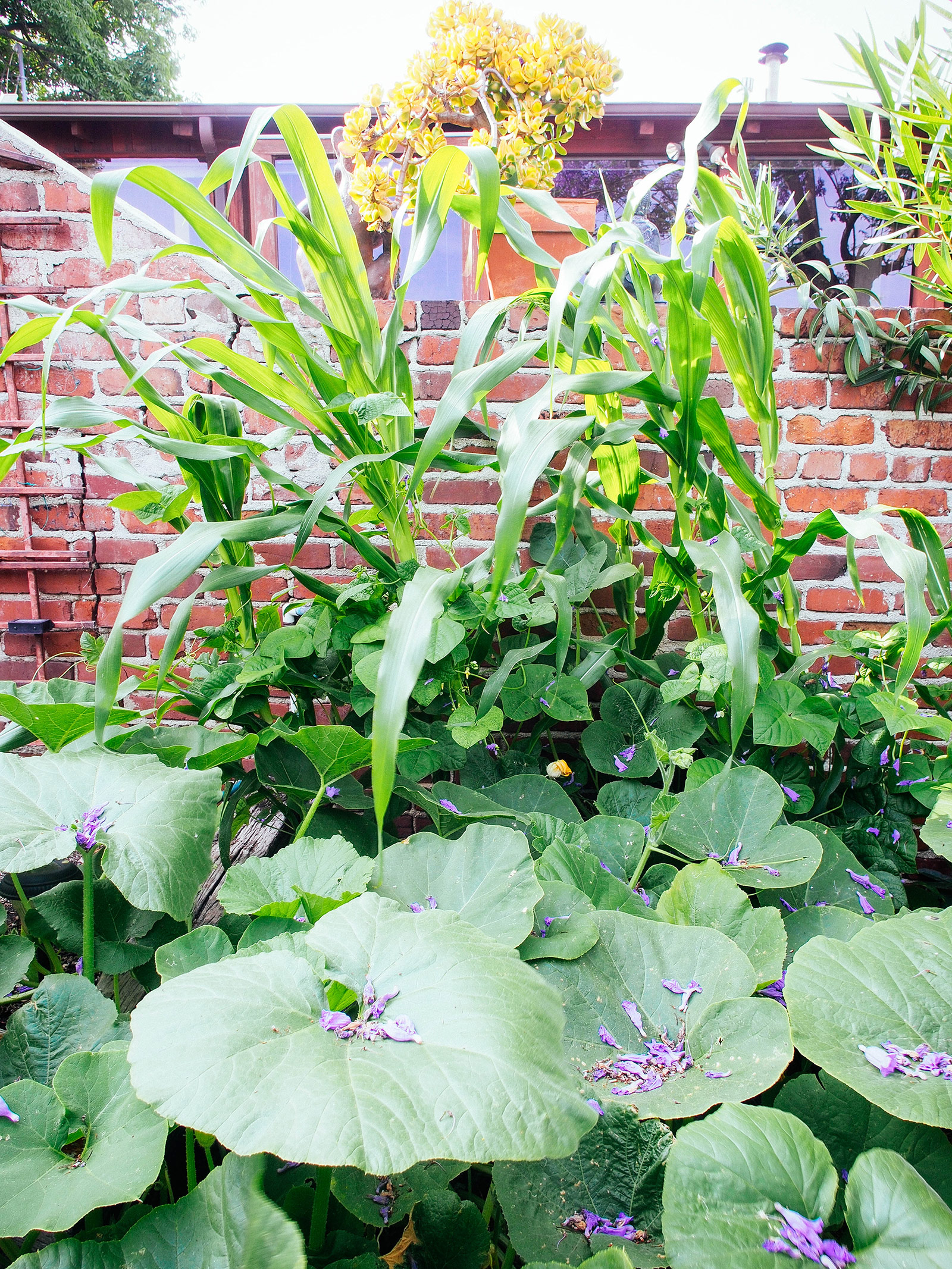
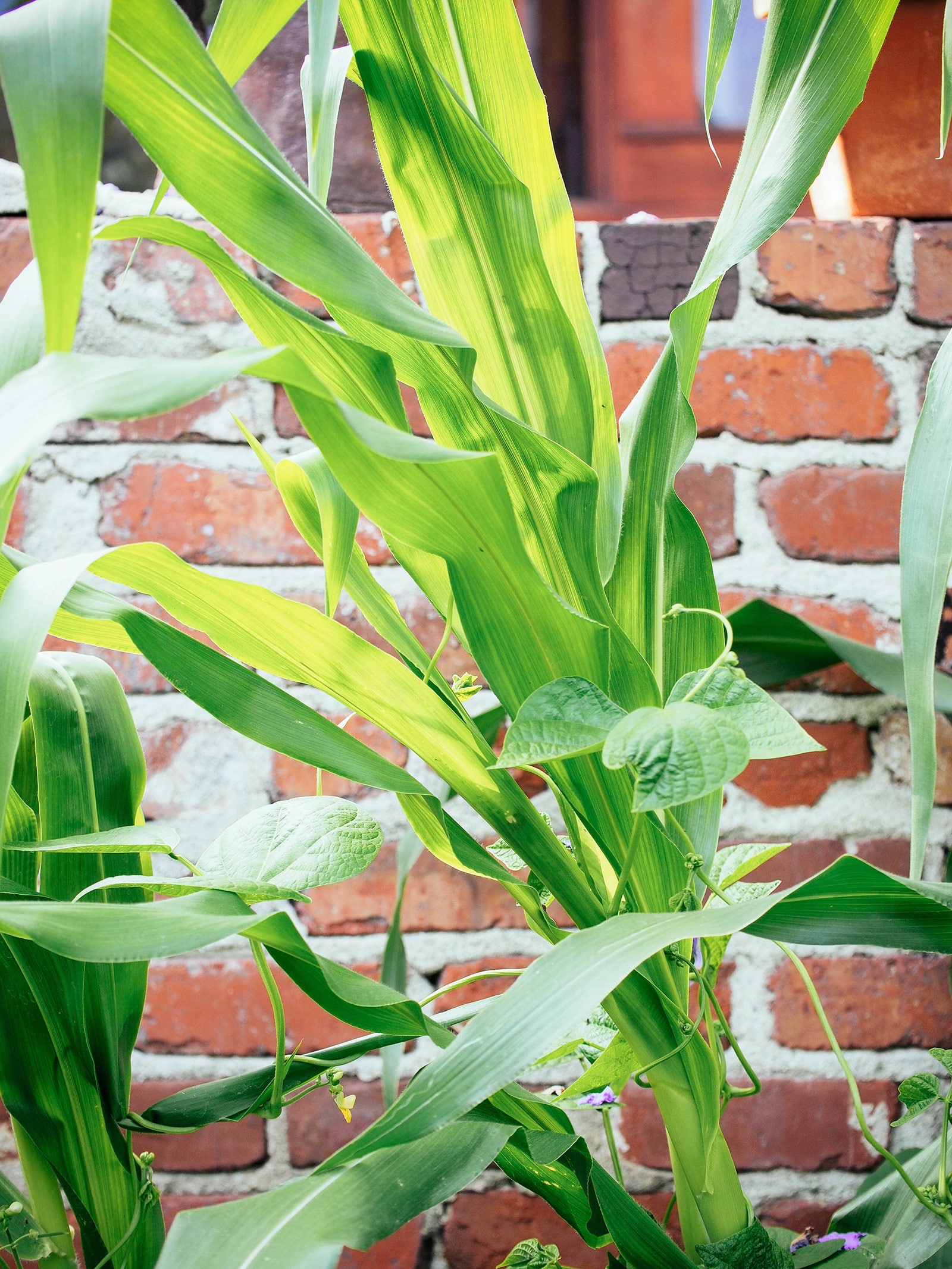

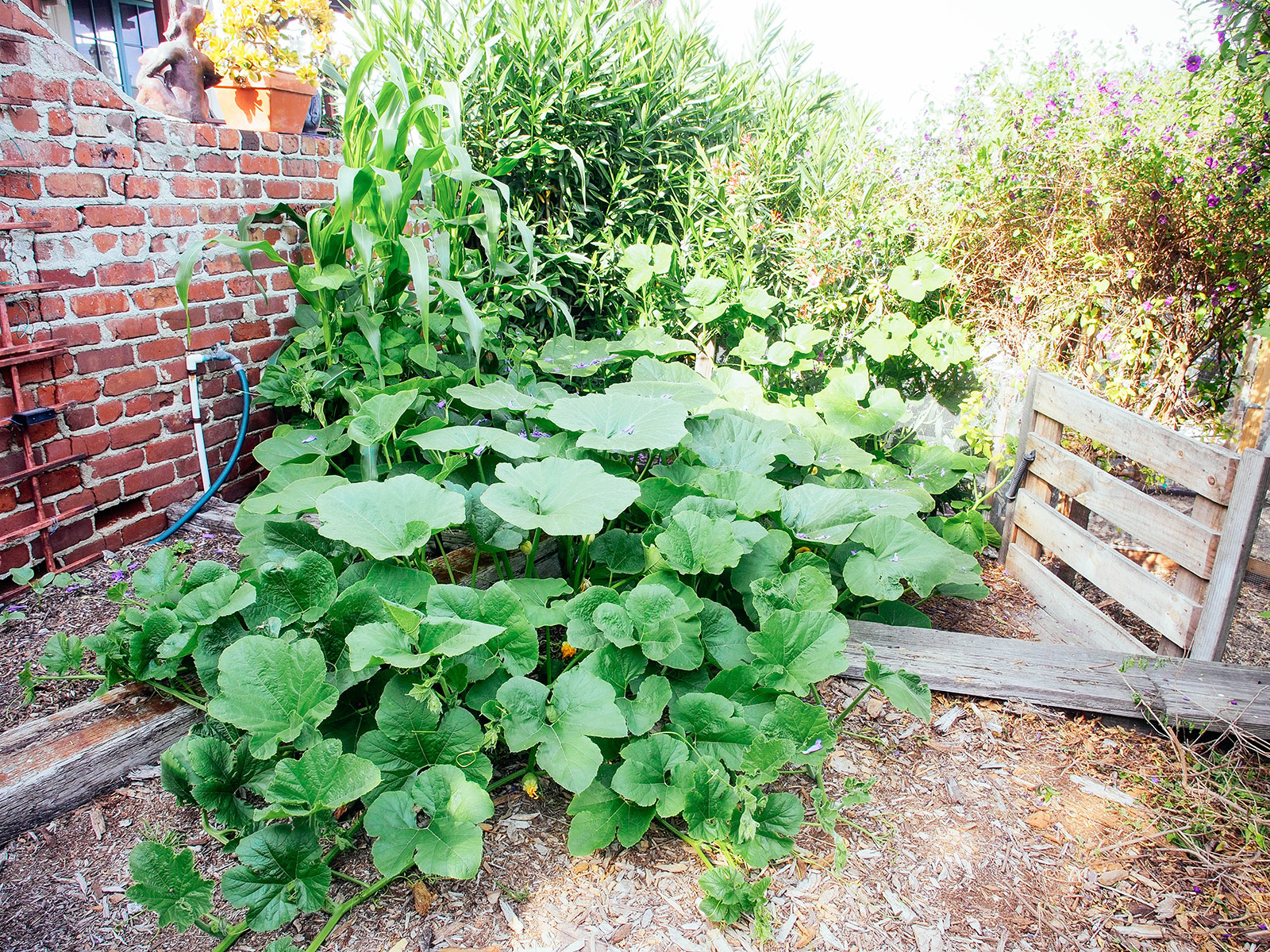
The Iroquois believed that the Three Sisters could only grow and thrive together in community, as they complemented each other not just agriculturally, but nutritionally as well. Corn was a source of carbohydrates, beans were rich in protein, and squash provided vitamins and minerals—a well-rounded diet to supplement the hunter/gatherer life. These three crops could also be dried and used as food year-round.
While these traits are less important today, they were so important in the past that they became the major cultivated crops of Indigenous peoples. In our current world of monocropping and overworking the soil, we can still learn a lot from this system to practice companion planting and improve soil fertility.
Disclosure: If you shop from my article or make a purchase through one of my links, I may receive commissions on some of the products I recommend.
Varieties to plant in a Three Sisters garden
The Three Sisters method entails the following companion plants working together:
Corn
This should be a tall variety to give the beans plenty of room to climb (and to make sure the beans don’t overcrowd the corn). Some early varieties are shorter plants that mature quickly, so they won’t work for a Three Sisters garden. Go with your favorite sweet corn, dent corn, or even popcorn here.
Favorite corn varieties to try: Honey and Cream Sweet Corn, Martian Jewels Sweet Corn, Glass Gem Flint Corn, Robust Pop Popcorn Corn
Beans
Beans should be a climbing type (also called pole beans) and not bush types, which stay compact and don’t need support. Lima, runner, yardlong, and common beans work best, as you want non-vigorous climbers and bushy pole types that won’t take over the corn.
Favorite bean varieties to try: Scarlet Emperor Pole Runner Beans, Orient Wonder Pole Yardlong Beans, Blue Lake Pole Beans, Kentucky Wonder Pole Beans
Quick tip: Before you plant beans, you should inoculate the soil with rhizobia to maximize the amount of nitrogen the beans can fix.
Squash
Squash can be summer or winter types, or a combination of both. But pay attention to what you plant: Some summer squashes, like zucchini, are bush types that stay relatively small and upright. These work great in a raised bed or other compact space, but in general, you want the vines on your squash plants to spread at least a few feet to properly “mulch” the soil.
On the flip side, be aware that vigorously vining winter squash like Pink Banana can grow up to 15 feet long, so it can quickly overwhelm the other two Sisters if you have a small garden. I typically look for squash varieties with vines between 4 to 8 feet long.
Favorite squash varieties to try: Table King Acorn Winter Squash, Red Kuri Winter Squash, Angel Hair Winter Spaghetti Squash, Waltham Butternut Winter Squash
Quick tip: Because of their similar growth habits, other cucurbits (like melons and gourds) can be substituted for the squash. Consider growing these crops in place of or in addition to the Three Sisters depending on what you like to eat and enjoy growing.
The other sisters
While corn, beans, and squash are the principal crops in a Three Sisters garden, sunflowers and amaranth were also important to the Native American people. They can offer a little shade to the other Sisters in the heat of the afternoon, provide more stalks to climb, and attract more pollinators with their flowers.
You can add these fourth (and fifth) Sisters to your garden bed as complementary plants and increase the biodiversity of your yard (which, in turn, reduces pests and diseases in other plants).
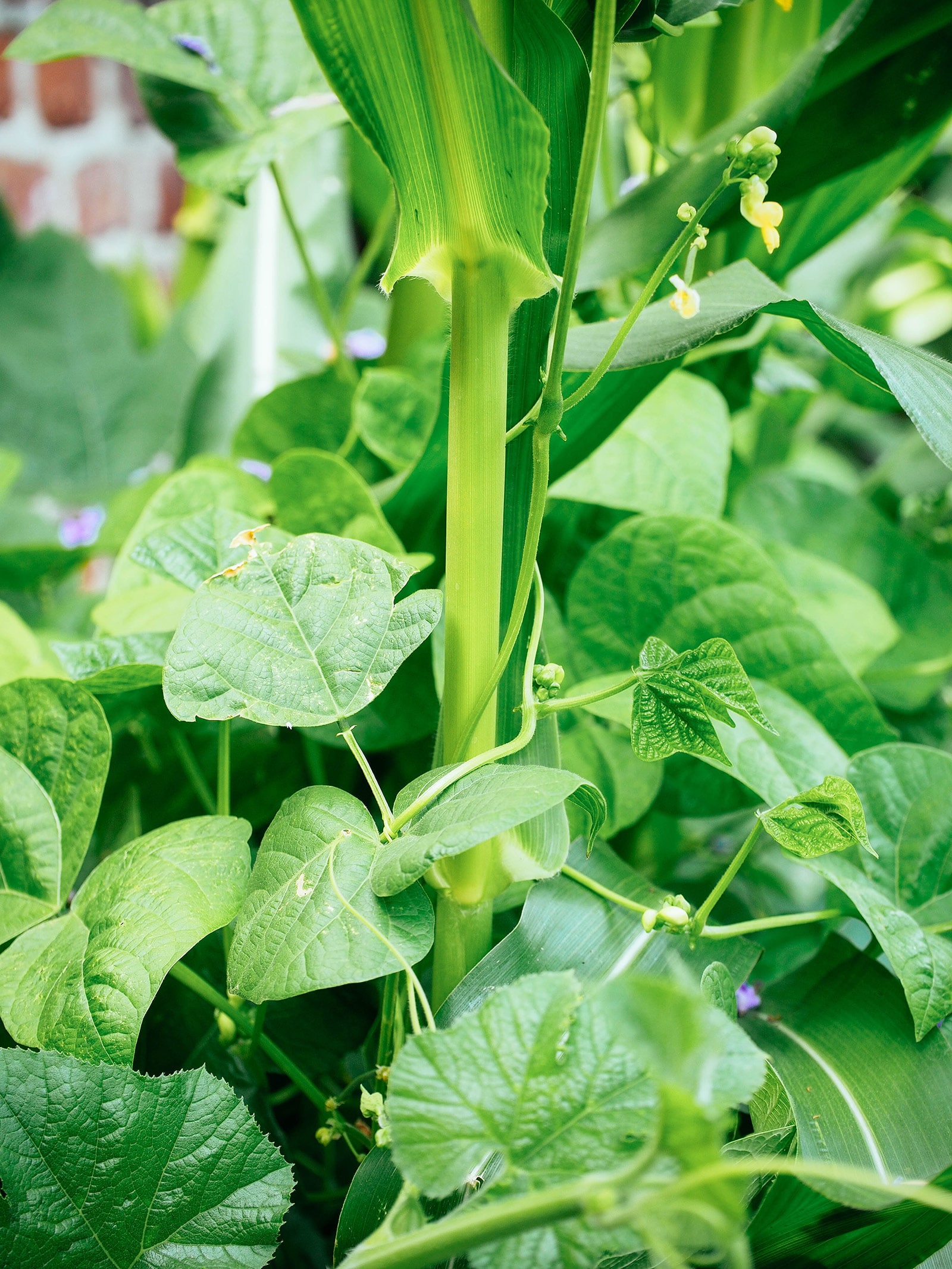
When to plant the Three Sisters
Corn, beans, and squash are warm-season plants and won’t tolerate frost. (Check your first and last frost dates here to make sure you plant at the appropriate time for your climate.) You’ll want to get seeds in the ground once nighttime temperatures are consistently 55°F and above, but not after June 1.
The plants will also need an area that gets at least six hours of direct sunlight each day. (More is better for sun-loving squash.)
In areas with very hot, dry summers, like the American Southwest, it’s important to plant the corn so that the pollen released during the corn’s tasseling period (anywhere from 30 to 70 days after planting, depending on the variety) happens before the season hits peak temperatures (typically in early July). High heat or low humidity during tasseling can lead to the pollen being sterile or much less effective, which then leads to ears of corn with missing kernels.
It’s best to direct sow seeds in the garden, since all these plants (corn, beans, and squash) don’t transplant well. That said, you can transplant seedlings if you have a short growing season; just try not to disturb their roots too much, since transplant shock can set them back a bit.
So, in what order should you plant?
Planting the Three Sisters in the order of 1) corn, 2) beans, and 3) squash will ensure they grow and mature together (and not grow at the expense of another sister crop).
By planting the corn first, it has a chance to grow nice and tall above the other crops.
Bean seeds should be sown two to three weeks later once the corn is a few inches tall—this ensures the corn stalks are tall and sturdy enough by the time the beans send out tendrils and want to climb.
Sow squash seeds two weeks after the beans have germinated; this gives the beans and corn time to grow larger so they’re not out-competed by the squash.
How to plant a Three Sisters garden
There are many different ways to plant a Three Sisters garden, whether you have sandy soil or hard clay, have a lot of land or are restricted to a raised bed. That said, the main consideration will be the amount of space you have. You want to give each individual plant enough room to grow, yet grow enough plants to facilitate pollination.
Corn is pollinated by wind and stands a better chance of producing nice, full ears of corn the more corn plants you have. It’s best grown in clusters, blocks, or staggered rows (rather than a single straight row) to ensure enough pollen gets around to all the plants.
Squash is pollinated by insects, so growing multiple squash plants in proximity will attract more insect activity once they start blooming. (In a pinch, you can also hand-pollinate squash.)
Beans are self-pollinated and will produce beans even with just one plant, but in an intensively planted garden bed like a Three Sisters, they tend to have a slightly lower yield so you’ll get more beans the more plants you have.
You can plant the Three Sisters in a linear or circular formation, depending on your space.
My 4×6 bed in these images sits against a wall, so I sowed the corn across the back first, placing a seed in a staggered row every 8 inches. Once the corn seedlings grew 4 to 6 inches tall, I sowed the beans about 6 inches in front of them, placing a seed every 3 to 4 inches, and then the squash along the edge of the bed every 2 feet, letting the vines eventually spill over the side.
Related: Get a Bigger Harvest With This Plant Spacing Guide for Raised Bed Gardens
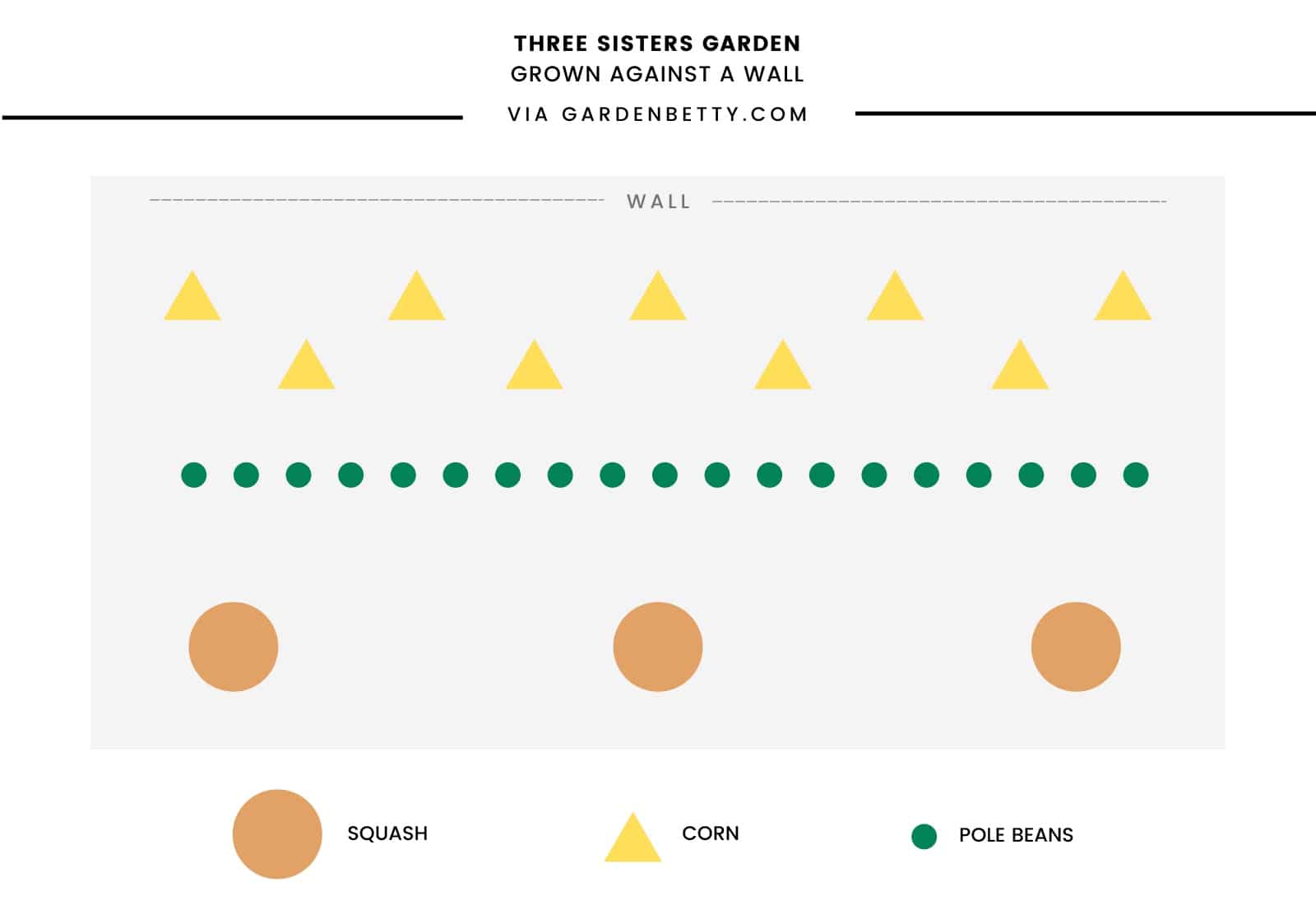
The beans started climbing the corn stalks as soon as they were tall enough, but the vines and tendrils can be trained by hand to latch on in the beginning. They’ll quickly twirl around the stalks as they climb higher, a natural tendency that helps keep the top-heavy stalks from blowing over in the wind.
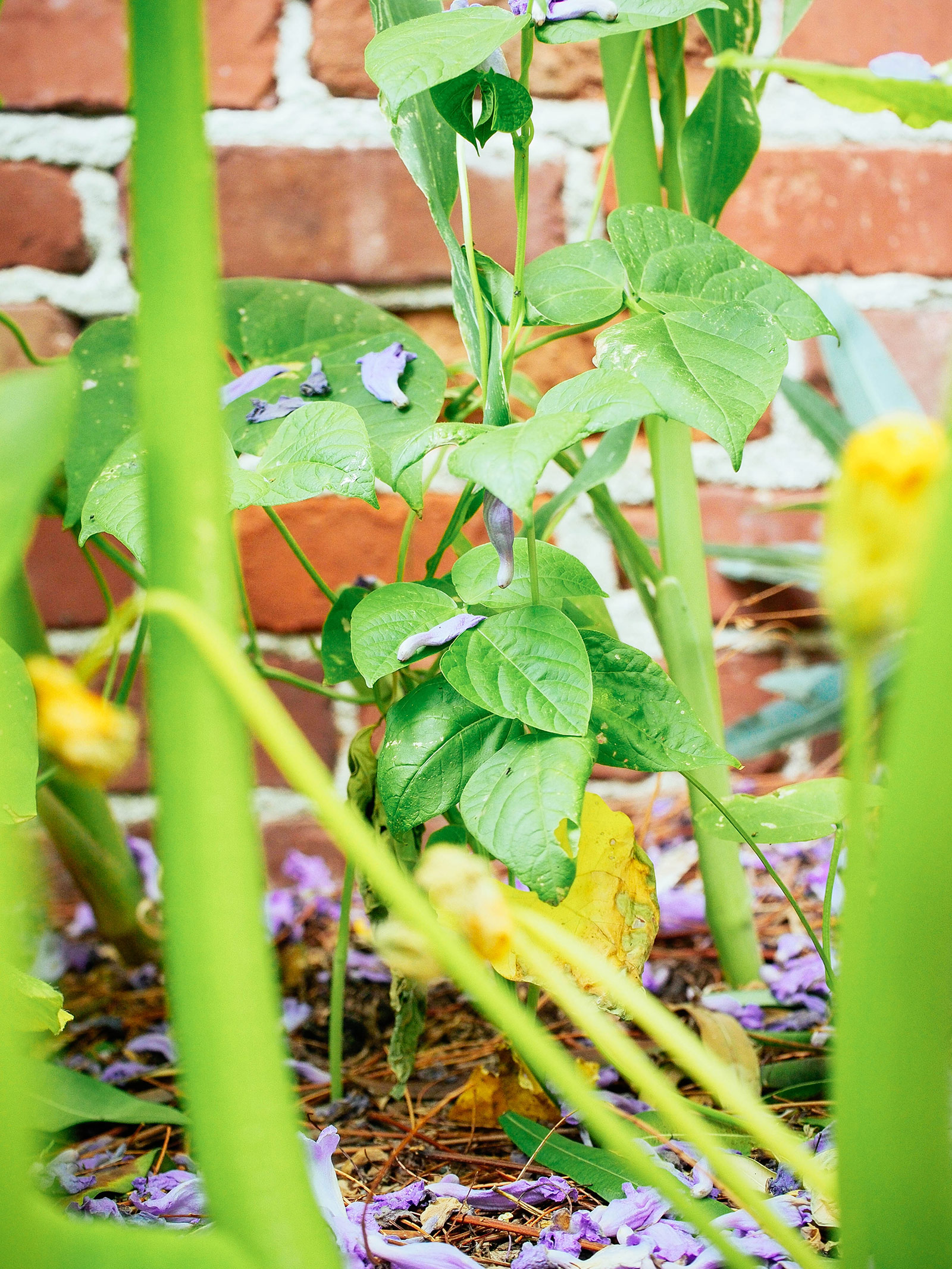
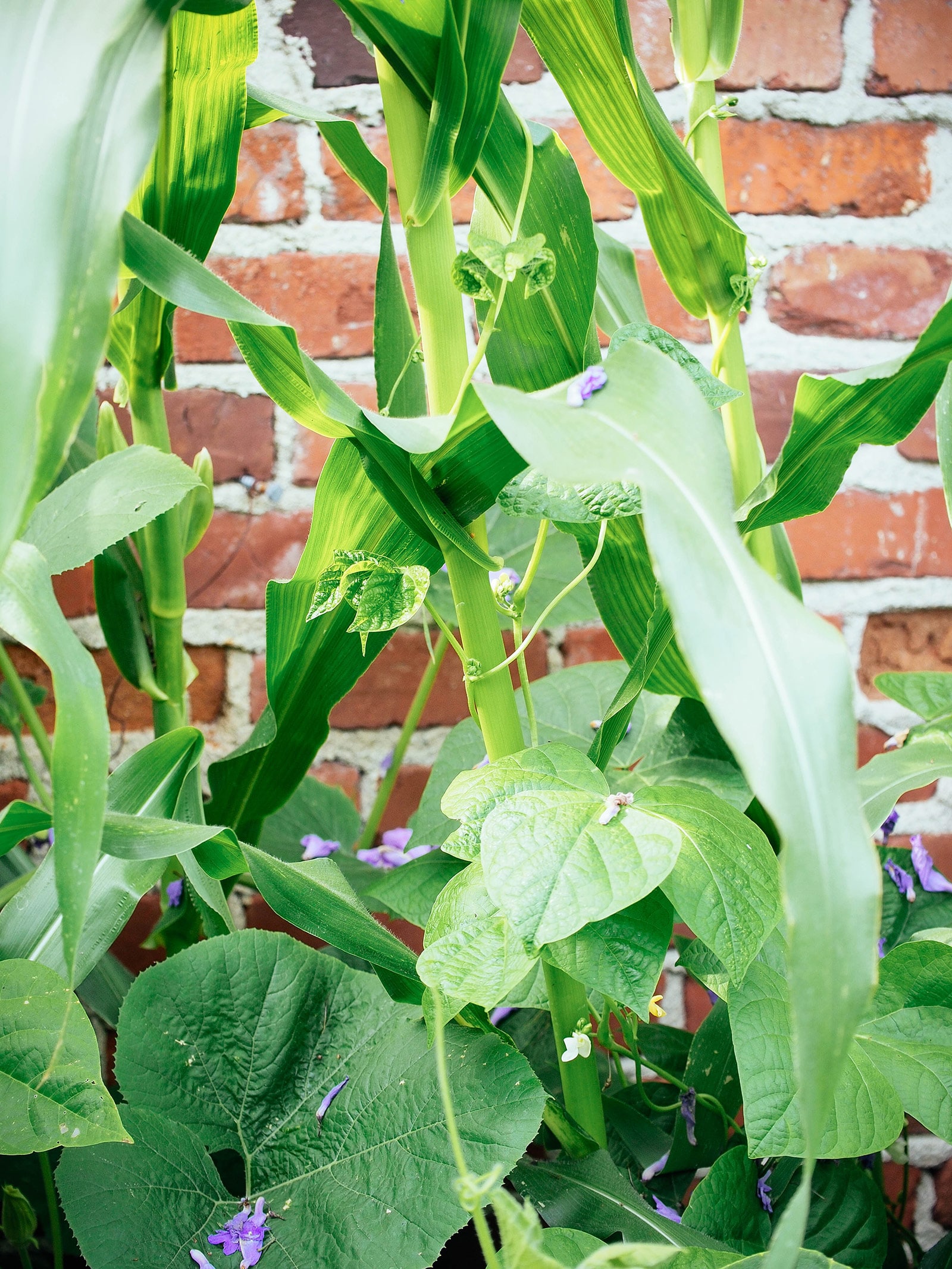
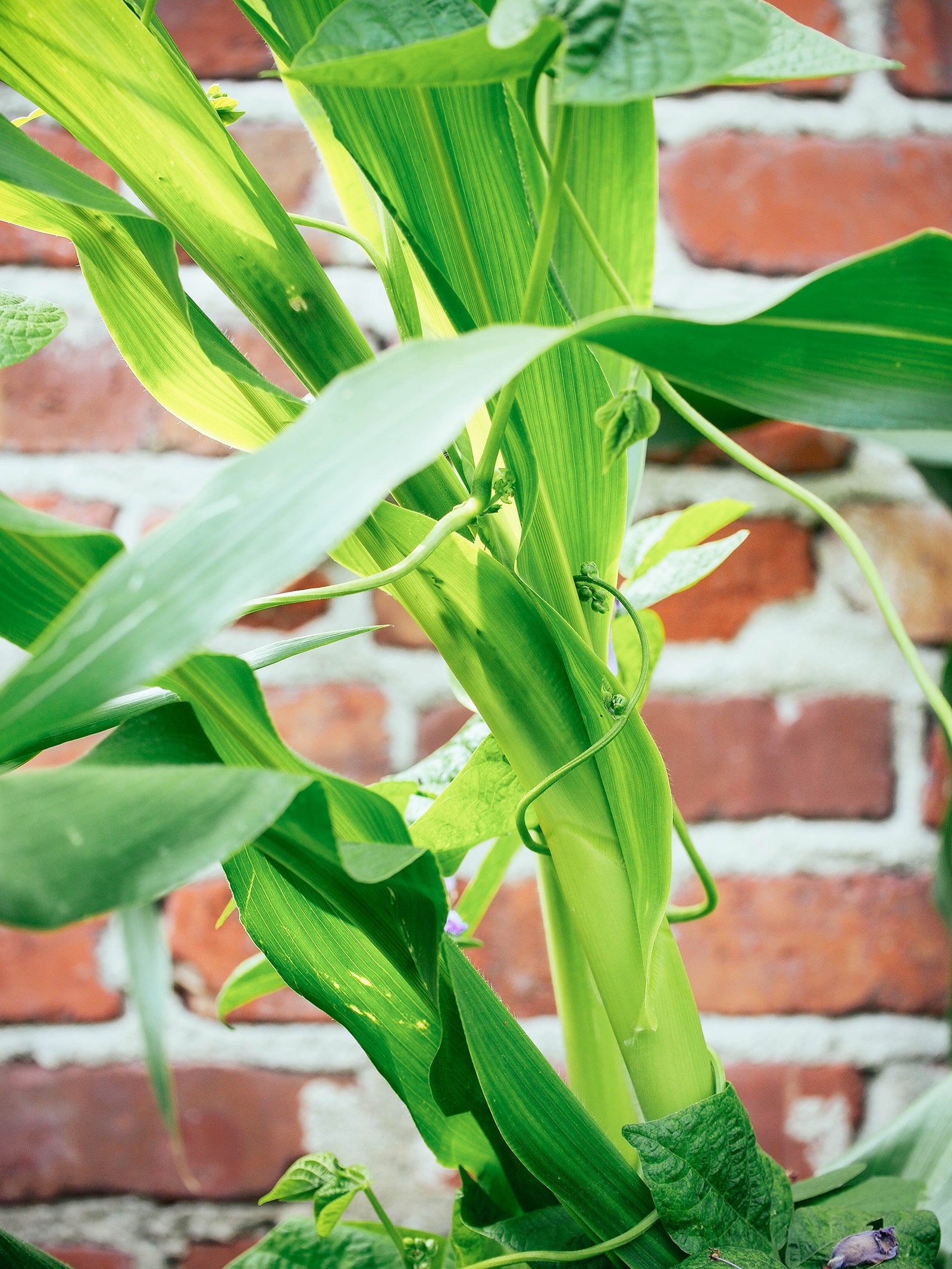
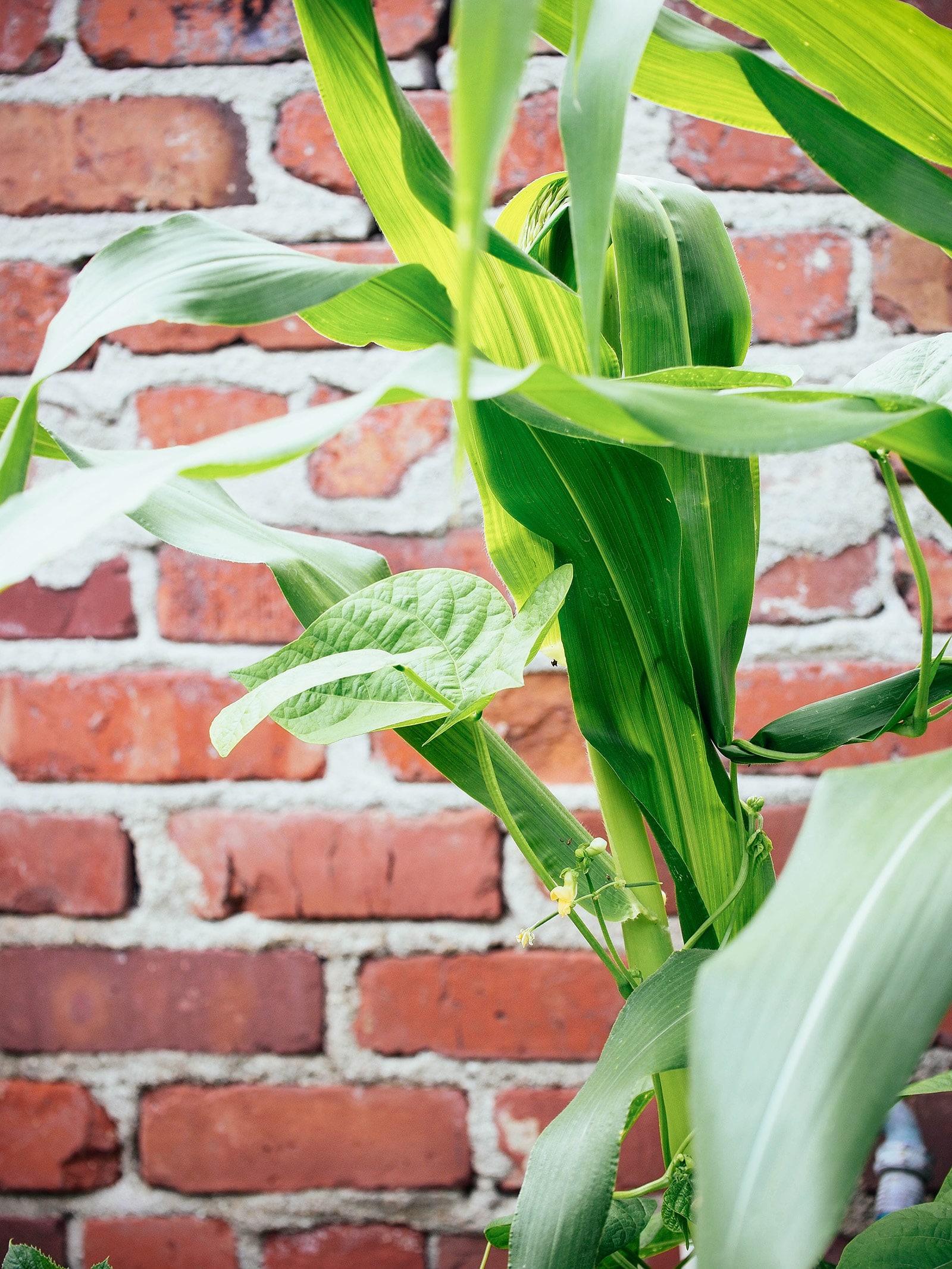
For gardeners with sandy soil, it’s best to grow the Three Sisters in a slight well, as opposed to a hill in the traditional method. A well will prevent water from running off too quickly.
For hard clay, a hill (basically a mound of soil that sits 4 to 6 inches high) will improve drainage.
If you’re planting in a raised bed, just make sure your soil is well amended and well draining—you don’t need to mound the soil since it’s already mounded (it’s just surrounded by walls).
Sample garden layouts for planting a Three Sisters garden
Here are a few more suggestions for planting your Three Sisters garden. There is no single “right” way to do it, as long as the corn provides support for the beans and the squash spreads across the soil to help retain moisture.
Use your creativity and see what works with the space you have. If you start your Three Sisters now, you’ll have corn that’s “knee high by the Fourth of July,” as the saying goes!
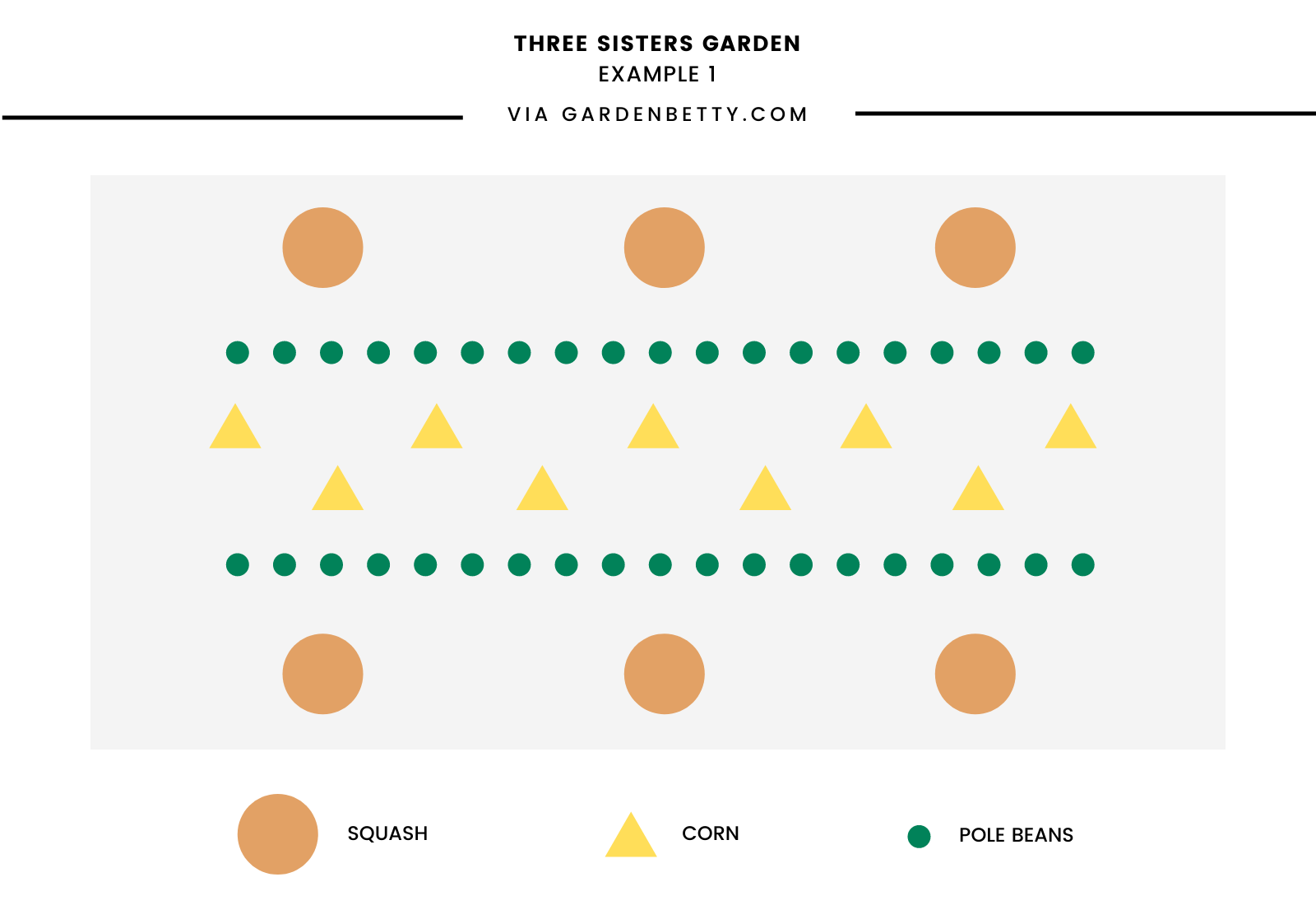
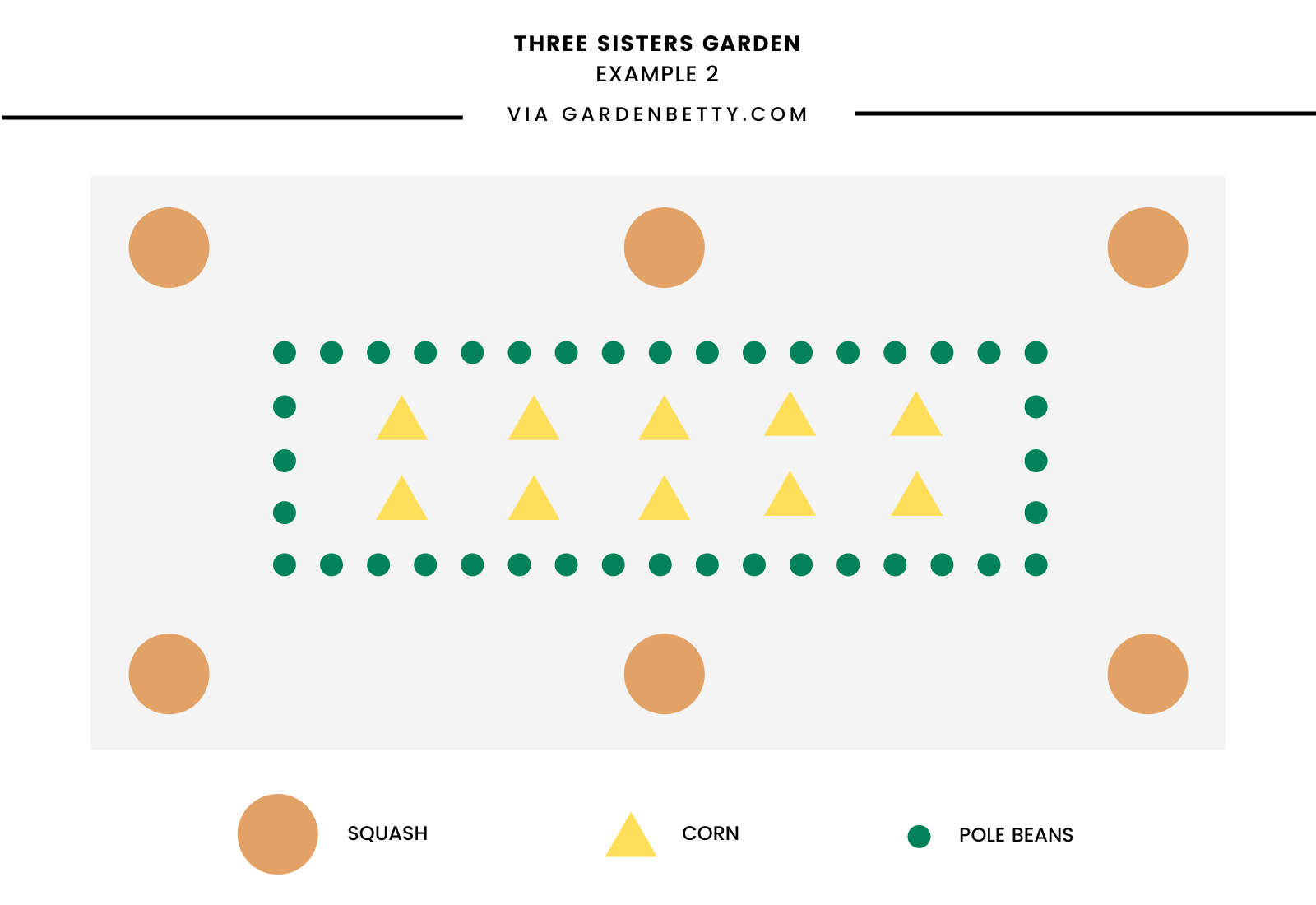
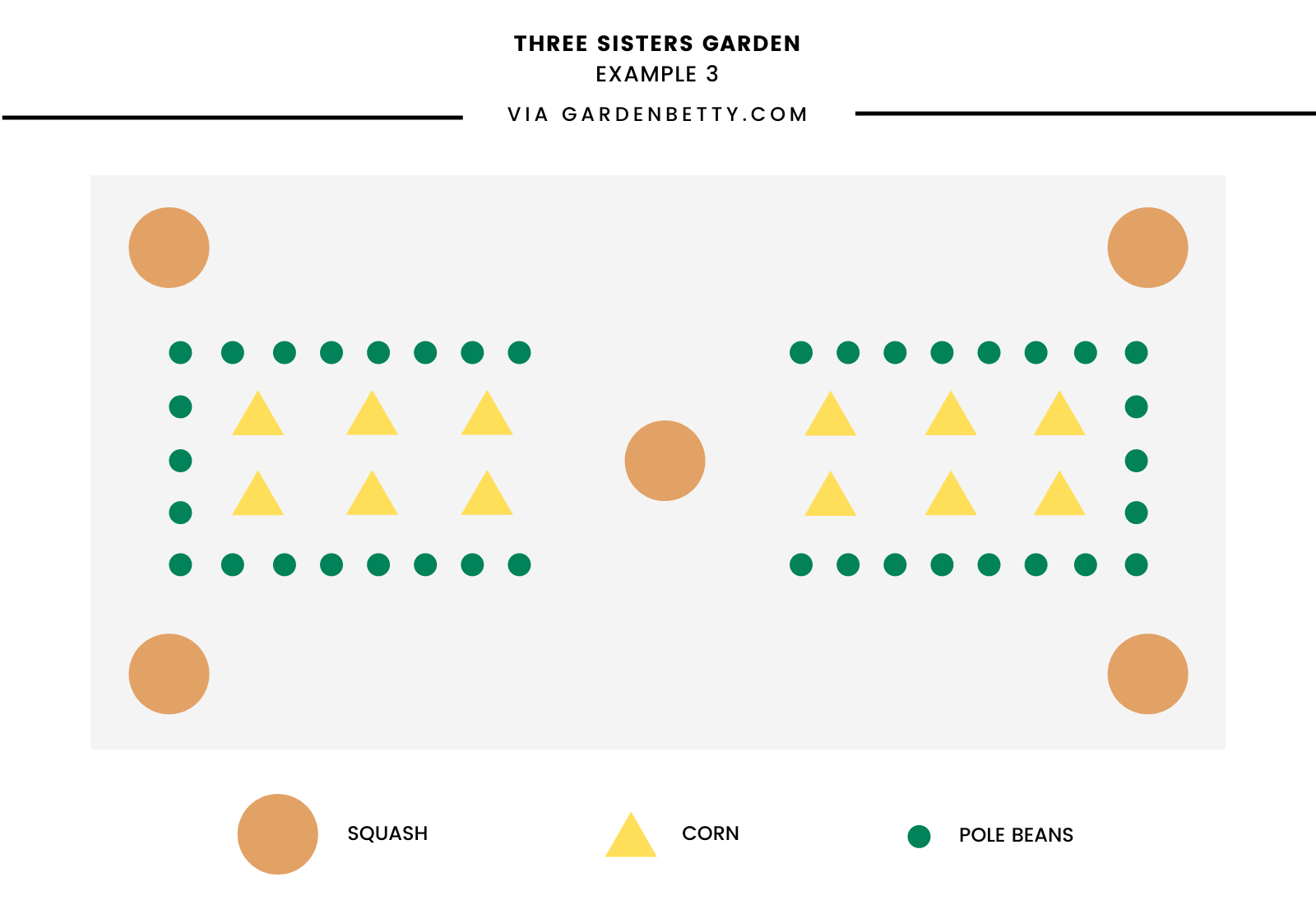
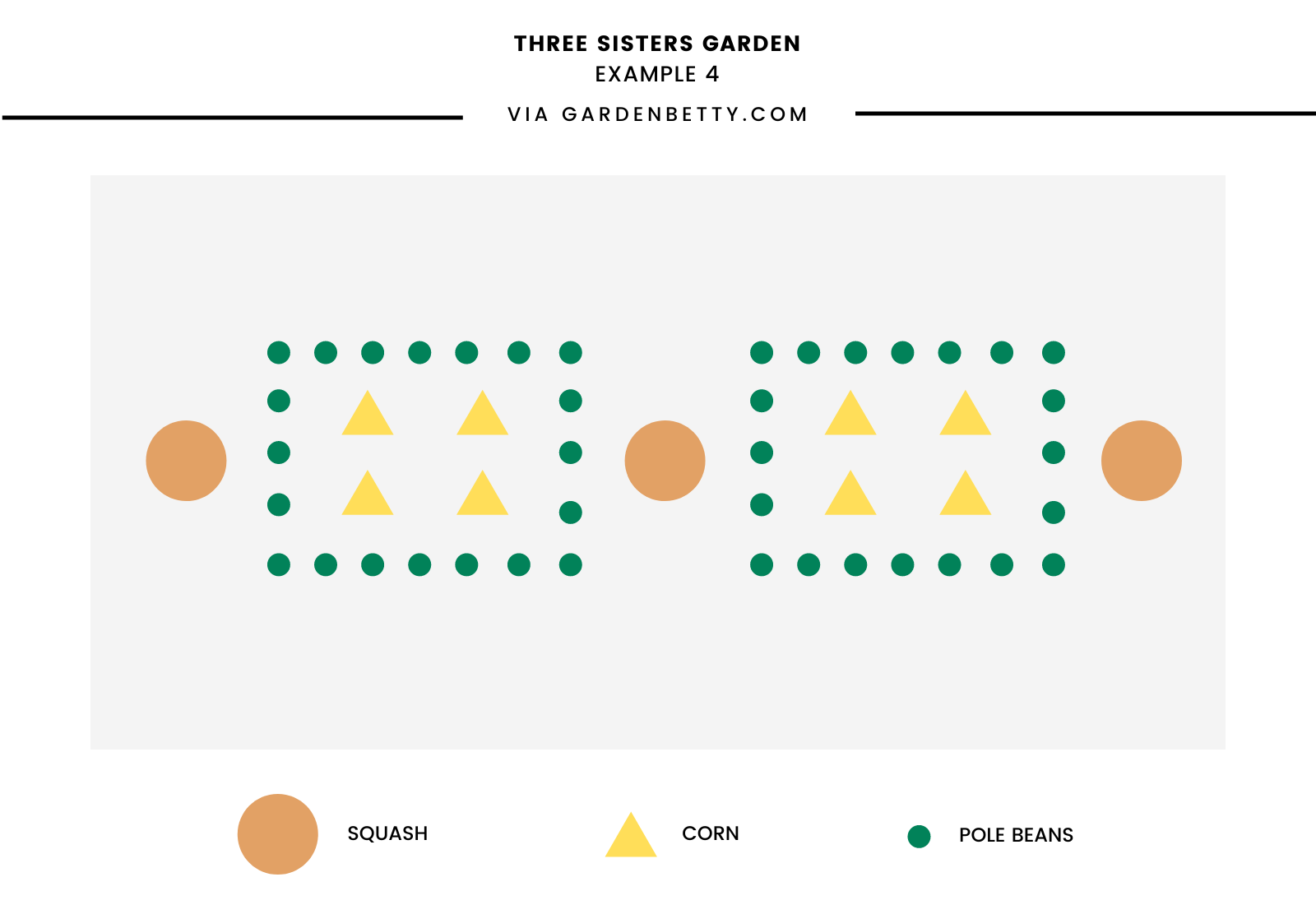
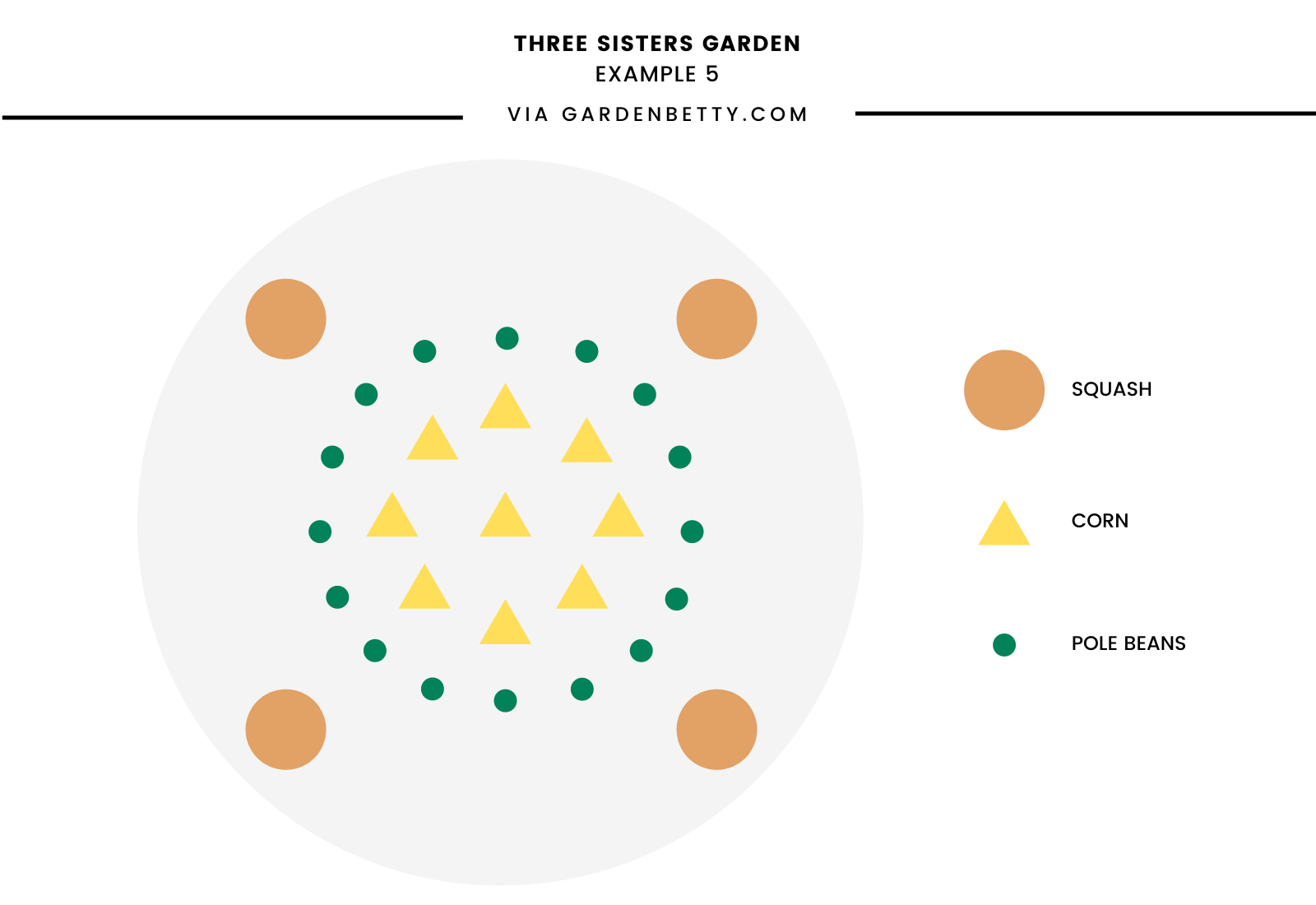
This post updated from an article that originally appeared on June 4, 2014.
View the Web Story on how to grow a Three Sisters garden.


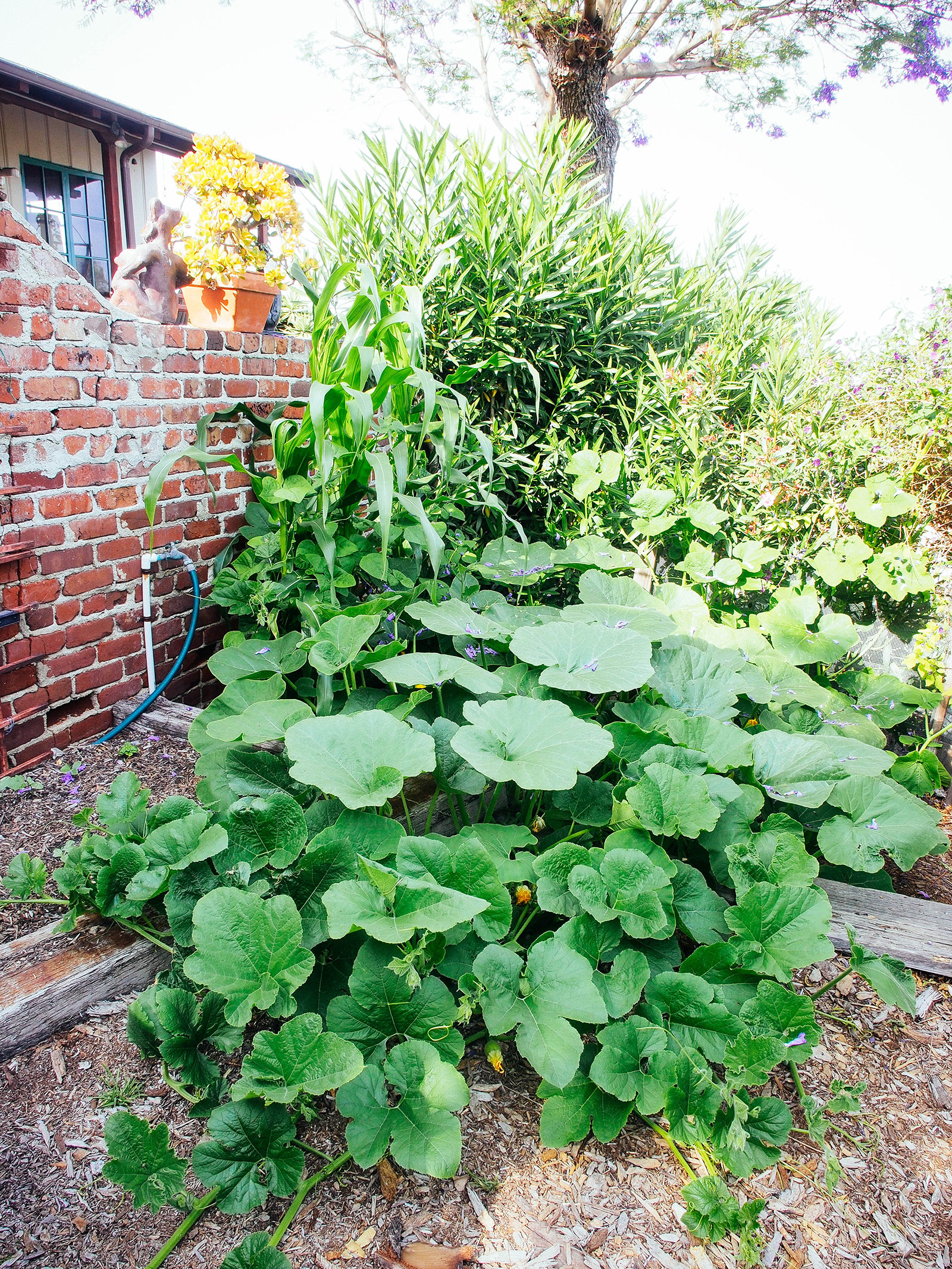
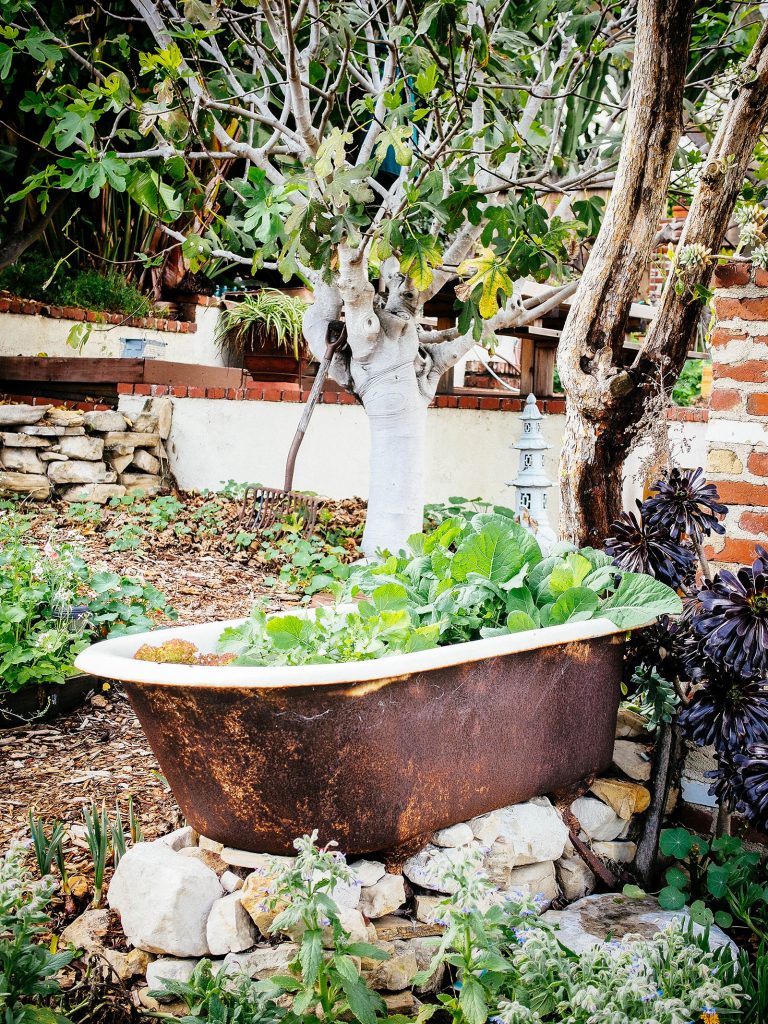
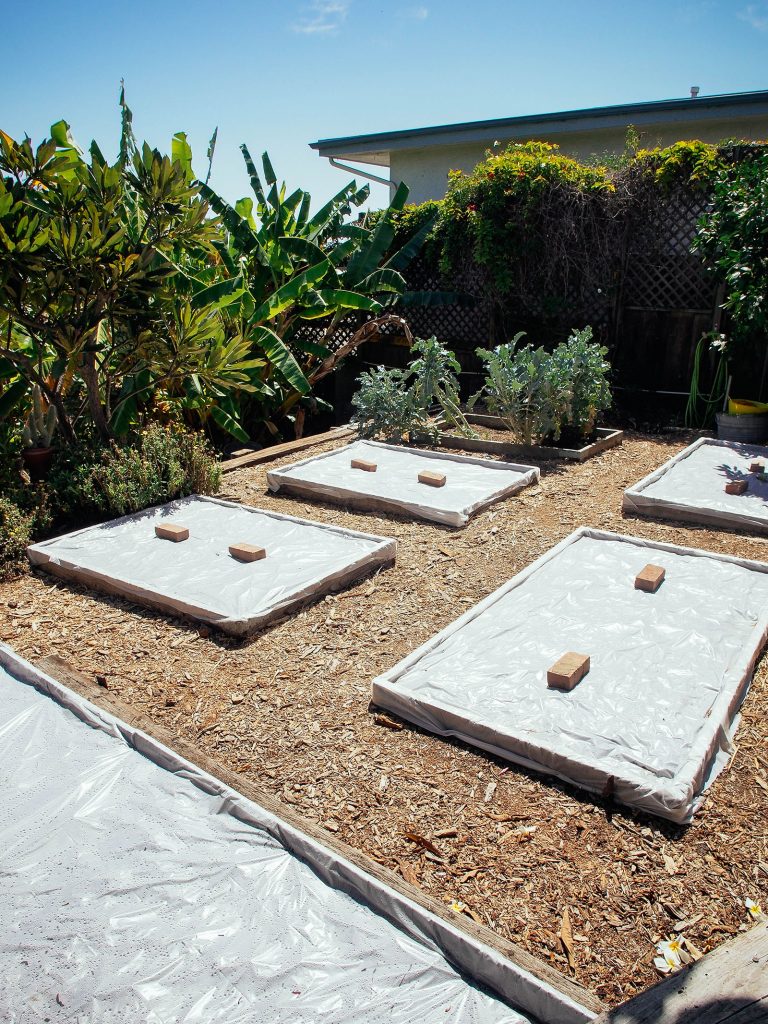
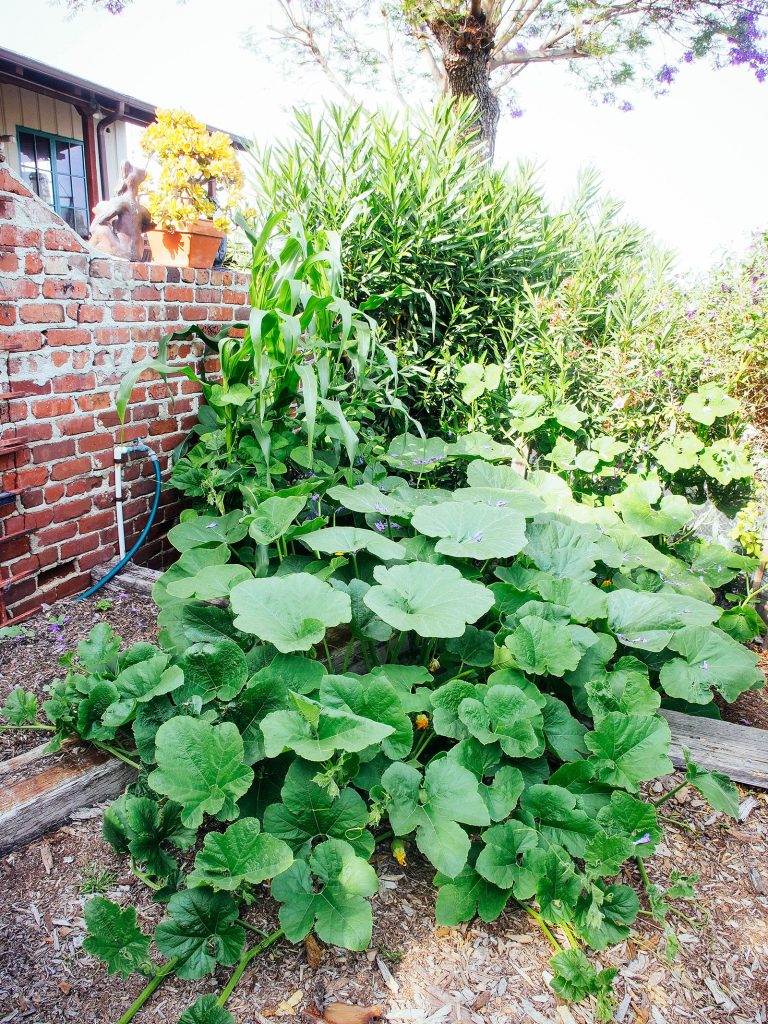
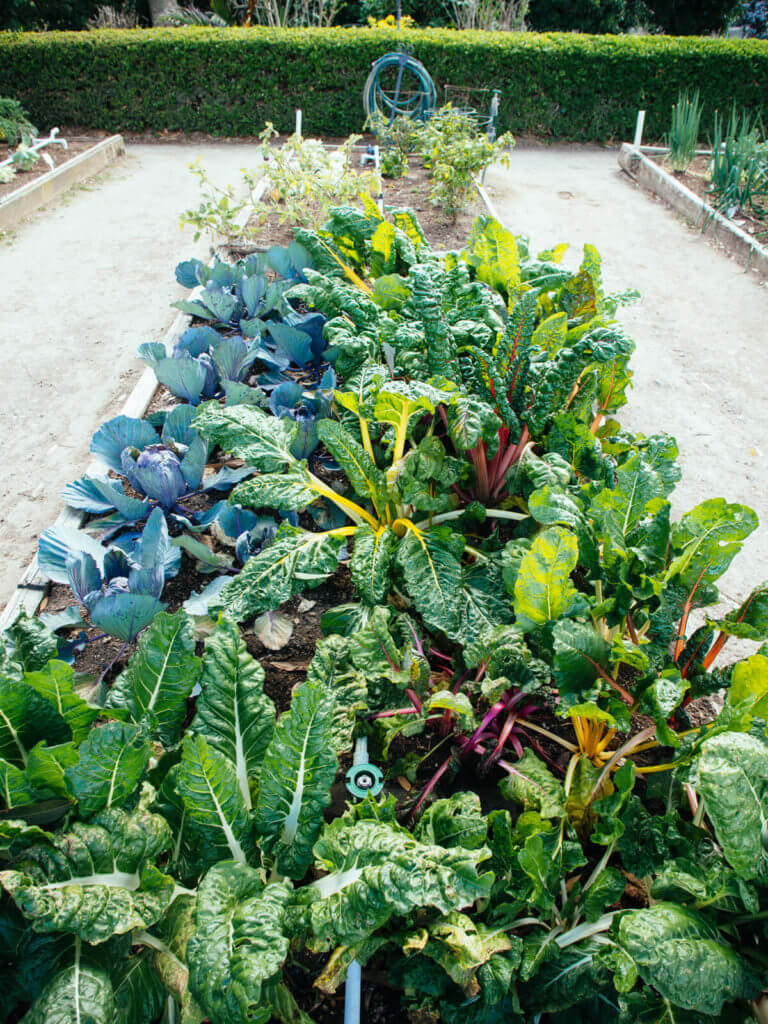
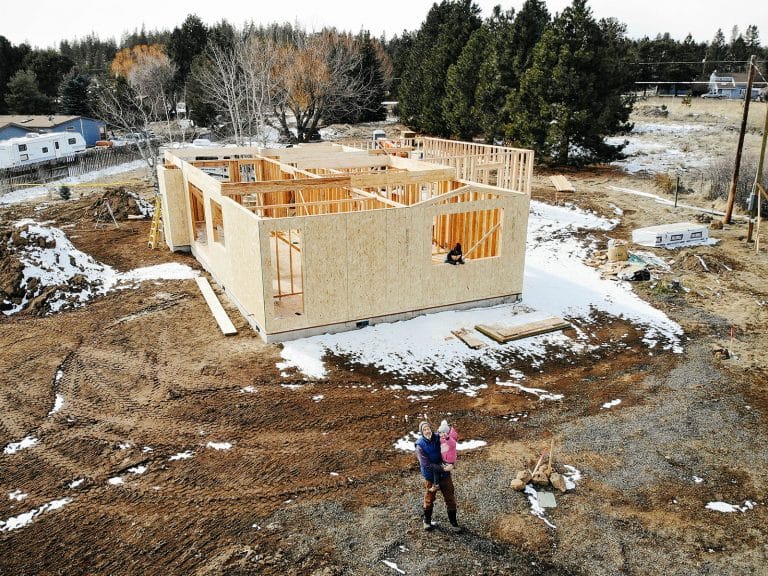
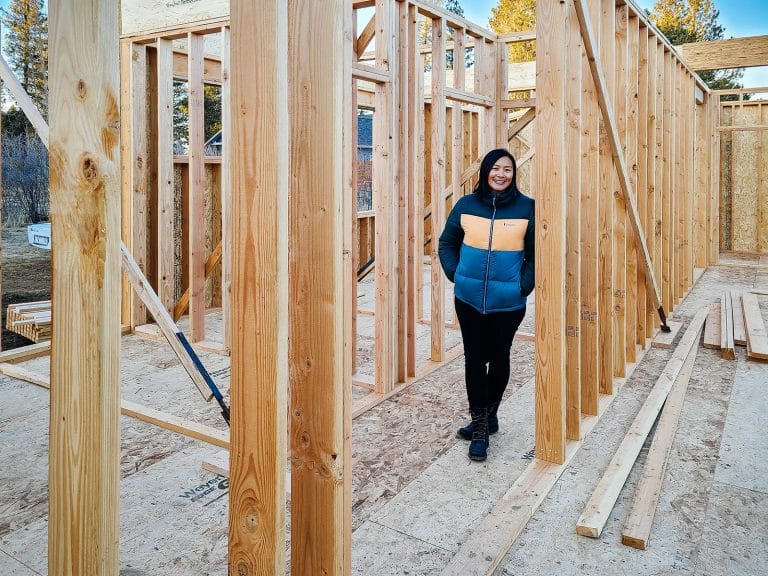
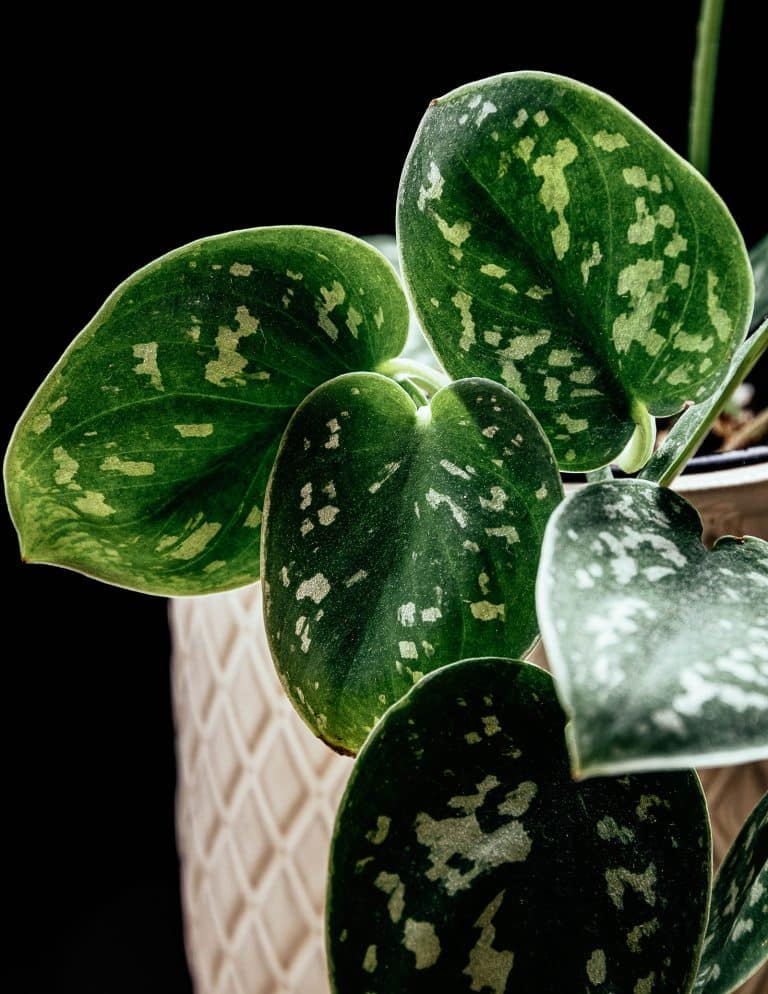
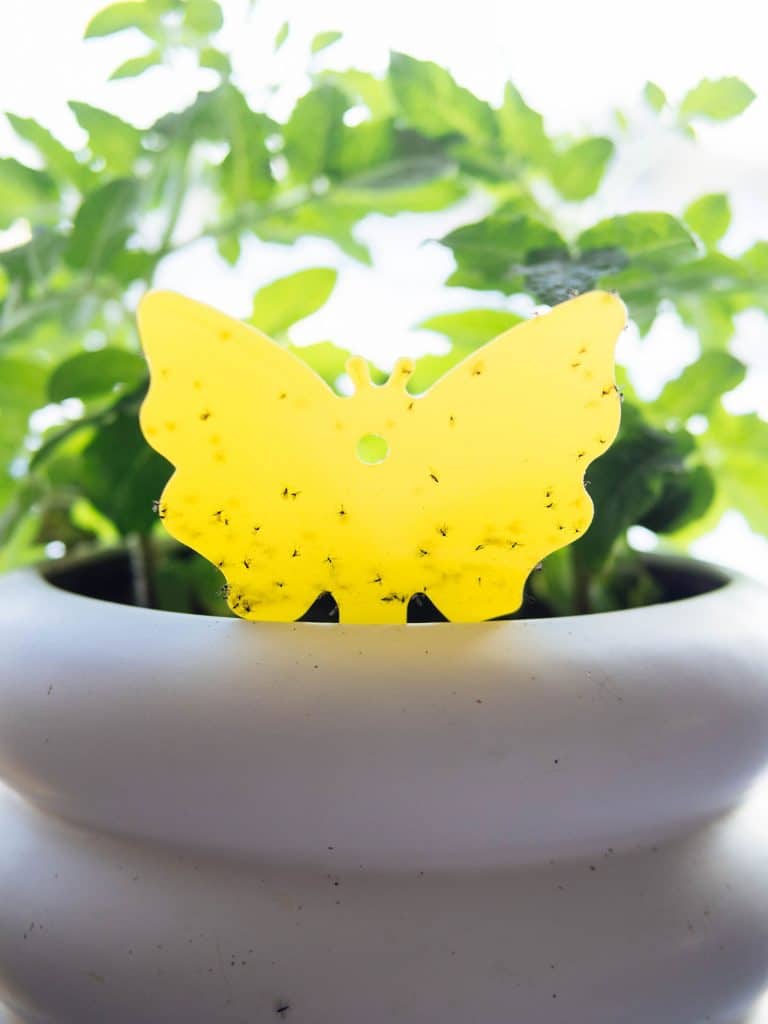
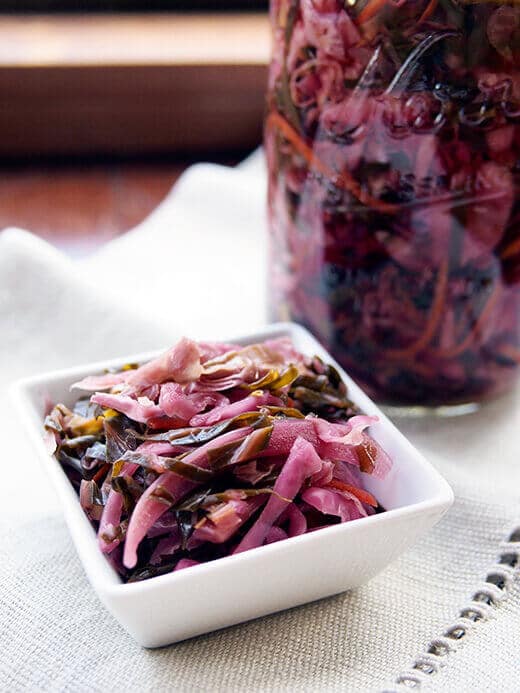
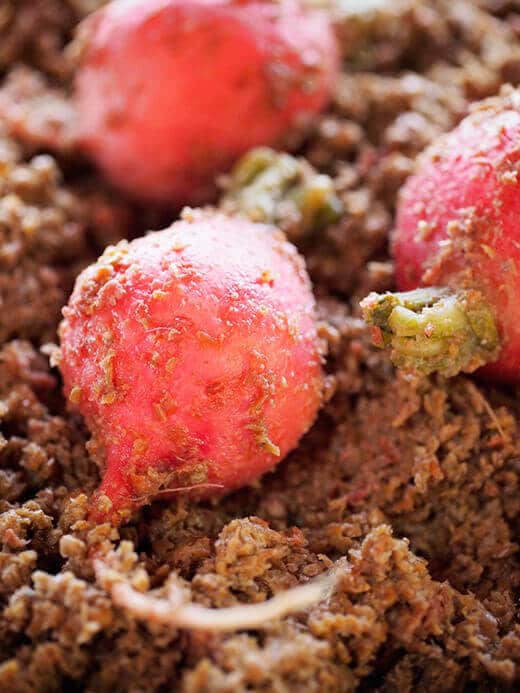
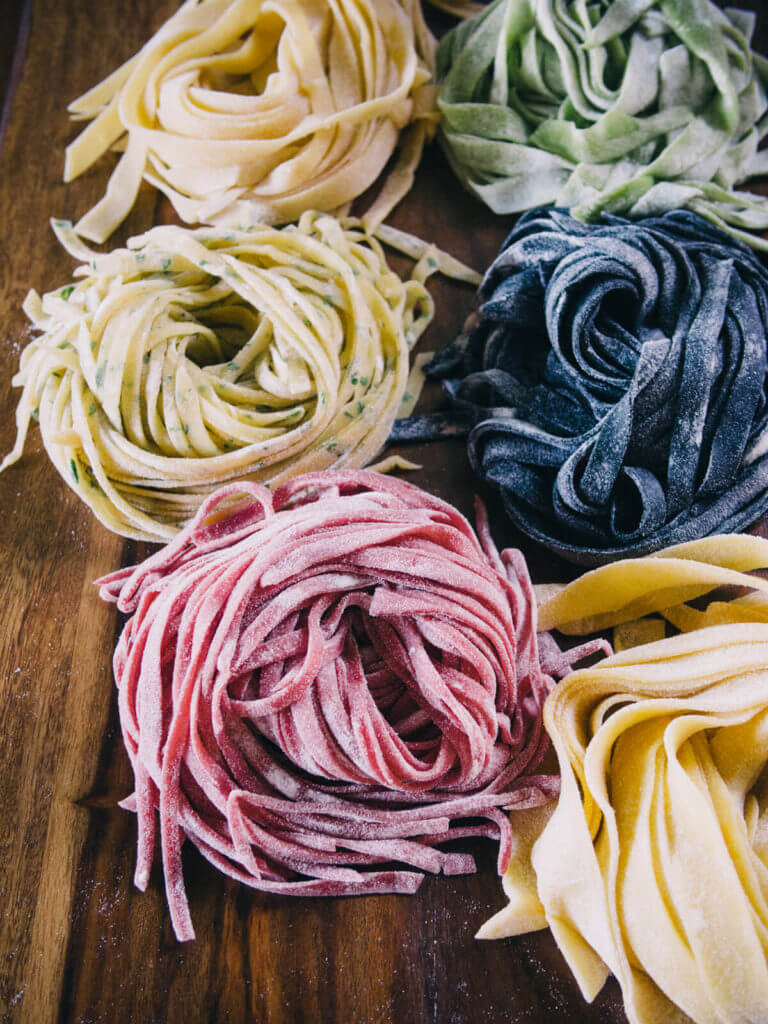


Those diagrams are where the money is at. Thank you for providing such helpful information! I’m excited to get started!!
Thank you! I have 4 ft wide beds, so this is exactly what I was looking for. Thank you!
Thank you! So helpful. One question: I thought sunflowers stunted the growth of things planted around them. Would sunflowers really be good to put in the Three Sisters garden?
Thank you!
This is the exact breakdown I was searching for, thank you so much!
You’re welcome Carmen!
really appreciate when you post an update:) this one on 3 sisters is helpful and good timing for my CA garden! Also wondering…because your posts are clearly grounded in both experience and research (thank you!) have you posted on what it takes to produce truly delicious AND nutritious produce? “Better than the grocery store” is just too low a bar for me; I want nutrient-dense vegetables that taste amazing. I’m reading Carol Deppe right now and you’re probably already familiar with her research on best varieties for key garden crops. I have learned that some potato varieties (not just type, like russet versus redskin) are great for baking, others for hash browns, and still others for stews (she says blue potatoes are always best in stews and not particularly good in any other way).Thanks for your informative posts, I appreciate all the work you do:)
I think you’ll really enjoy this book by Jo Robinson: https://amzn.to/3LqWNVH
It’s one of my favorite resources that explores flavor and nutrition of certain types of fruits and vegetables. Super eye-opening, all based on research, and will likely change the way you eat (or at least, look at produce).
One of the easiest ways to increase the nutrient content of your crops is to grow heirlooms, which haven’t been tinkered with to produce desirable growing characteristics at the expense of nutrition. I touch on this in my post here: https://gardenbetty.com/grow-food/
Mycorrhizal fungi are also believed to help increase nutrient content in crops by making soil nutrients more available to plants—this is something I’m still researching in my own garden. In the meantime, however, you can inoculate your own soil with mycorrhizae to see some of these benefits.
I know this is an old post but Im intrigued by this idea. Can you do something similar with florida trellised tomatoes? I would like something to be a cover crop inbetween the rows. Other than oregano, nastirum or thyme. Would Melons work? maybe without letting them climb the tomatoes?
Yes, you can certainly try melons as a ground cover for your trellised tomatoes. Since both crops are heavy feeders, however, make sure to fertilize regularly. I would stick a few borage plants in there for the pollinators too (borage flowers and leaves are also edible).
I’m trying to grasp in the diagrams above how many corn to plant in my rows. My raised bed is 4′ x 9′. I saw you mentioned 4×6′. So, should I plant more corn than you did?
I recommend spacing your corn about 8 inches apart. Remember that pollination improves when corn is grown in clusters, so plant at least a couple of rows, or one staggered row as I did (and not a single, long, straight row).
I have a 4×8 raised bed. How would you recommend
You can follow any of the diagrams in the post, and add more seeds as needed to fill the space you have.
Is there a particular timing to planting the different seeds in relation to each other? Do you plant all the seeds at the same time or is there an order and waiting for certain ones to sprout?
I think you plant the corn seeds first. Then, when the corn is 4-6″ tall you plant the pole bean seeds around the corn. About a week later plant the squash seeds.
I plant the corn first. Once the stalks are 4-6 inches tall, the beans go in, then the squash.
read article again, duh. it states planting timing very clearly!
Thanks for a helpful post. It looks like there is more bean planted than corn. Is this an issue at all with them getting tangled sharing the same stocks?
I usually have a couple of bean vines climbing up a corn stalk. It does not hinder your ability to harvest the pods or the ears.
RT @Sowandglow: Corny
RT @aptaim: Totally doing this! MT @theGardenBetty: Native American method viable today: Planting a 3 Sisters Garden http://t.co/Wz7W4A86yG
RT @adamcortell: Planting a Three Sisters Garden http://t.co/C7pqYtqdlg From Garden Betty by Linda Ly
RT @adamcortell: Planting a Three Sisters Garden http://t.co/C7pqYtqdlg From Garden Betty by Linda Ly
RT @adamcortell: Planting a Three Sisters Garden http://t.co/C7pqYtqdlg From Garden Betty by Linda Ly
RT @adamcortell: Planting a Three Sisters Garden http://t.co/C7pqYtqdlg From Garden Betty by Linda Ly
Planting a Three Sisters Garden http://t.co/C7pqYtqdlg From Garden Betty by Linda Ly
RT @ChadKremp: Education and inspiration! Great blog post! MT @theGardenBetty: Planting a Three Sisters Garden http://t.co/NftXzgnZXd
Blogged on Garden Betty: Planting a Three Sisters Garden http://t.co/sDqgf9Eoj1 < TY for RT! @louposkitt @nomadicorganics @delightfulrepas
I am trying this for the first time this summer using the square foot gardening method. In one half of the bed I have bush beans and the other half I have Rattlesnake pole beans planted. It is my first time to plant corn and I tried two different varieties. As long as it doesn’t get into the 100’s before August (the 5th season in SE Texas) I think we will do well. I have also added some sunflowers on one of the boarders as extra support for more pole beans. Hoping for bumper crops!
Just an FYI, you should only grow one variety of corn at a time unless you have physical barriers (like floating row covers) separating the two varieties. They could cross-breed during pollination and produce very unsavory corn.
It is true that it is better to grow only one variety of corn, easpecially if you have limited space, such as in an urban garden or a square foot garden.
Corn is wind pollinated. This means that pollen from your neighbor’s corn can blow in and fertilize your corn, creating cross-bred seed. If you want to raise a certain variety of corn, and you want to harvest the seed and have it grow with consistent results from successive generations of seed, you want to minimize cross pollination from outside sources. You can do this somewhat by planting your corn in a sheltered, low wind area, and by growing only one variety of corn.
HoWever, you can raise more than one variety of sweet corn, but you must make certain that they are not releasing pollen at the same time, causing cross-breeding and possibly unsavory corn. You can do this by:
(1) planting one early maturing variety (such as Sugar Baby which matures in 65 days) and one late maturing variety (such as Silver Queen which matures in 95 -100 days) at the same time. They will have different pollination times that will not overlap, thus they will not cross-pollinate.
OR
(2) by staggering the planting time for two varieties that mature at the same time (such as Sugar Baby and Early Girl which both mature in 65 days) by planting one variety, then waiting at least 14 days before planting the other variety. One planting will release viable pollen much earlier than the other planting, thus they will not cross-pollinate.
Either method also gives you a longer period of harvesting corn over the growing season.
If you’re gonna think of how this thing grows you would really be amazed. It only means that God’s creation is such a beautiful one. I love the idea behind it and planning to do the same if there is a chance.
__________________
Joaquinn Parker
Rooted in Native American history, it’s the basis for companion planting: Planting a Three Sisters Garden http://t.co/rQw1WHxN41 #gardenchat
RT @theGardenBetty: Corn, beans, and squash form a sustainable ecosystem in a garden: Planting a Three Sisters Garden http://t.co/SlUi1j2bf…
RT @theGardenBetty: Corn, beans, and squash form a sustainable ecosystem in a garden: Planting a Three Sisters Garden http://t.co/SlUi1j2bf…
RT @theGardenBetty: Corn, beans, and squash form a sustainable ecosystem in a garden: Planting a Three Sisters Garden http://t.co/SlUi1j2bf…
Corn, beans, and squash form a sustainable ecosystem in a garden: Planting a Three Sisters Garden http://t.co/SlUi1j2bfA #gardenchat
I’ve just started to learn and try companion planting, but I’ve never heard of the three sisters garden – that is so cool!
RT @theGardenBetty: We can learn a lot from the Iroquois when it comes to companion planting: Planting a Three Sisters Garden http://t.co/S…
We can learn a lot from the Iroquois when it comes to companion planting: Planting a Three Sisters Garden http://t.co/SkRmXMyI64 #gardenchat
RT @theGardenBetty: Blogged on Garden Betty: Planting a Three Sisters Garden http://t.co/sDqgf9Eoj1
Totally doing this! MT @theGardenBetty: Native American method viable today: Planting a Three Sisters Garden http://t.co/OYj8YkGNTP
A centuries-old Native American method that’s still viable today: Planting a Three Sisters Garden http://t.co/Wz7W4A86yG #gardenchat
I always do companion planting in my garden. It really makes a big difference. I have bush beans browning next to my 5 kinds of squash. I put in a handy panel so the squash wouldn’t take over the garden though. It is still trying to, but it is also growing up the panel and the squash is off the ground and away from bugs. 🙂 My spaghetti squash is a very aggressively growing plant and would be taking over the yard if I didn’t use the handy panel.
The squash pictured in this post are all winter squash, so I know the feeling. 🙂
Education and inspiration! Great blog post! MT @theGardenBetty: Planting a Three Sisters Garden http://t.co/KEclMcLDEl #gardenchat
Corny
If you start now, you’ll have corn that’s “knee high by the 4th of July”! Planting a Three Sisters Garden http://t.co/iTtVhx3DJ4 #gardenchat
Did you plant bush or pole beans?
Bush beans don’t climb like the ones she has in the photo. They are pole beans.
As Laurie said — you want to grow pole beans, runner beans, winged beans, or yard-long beans, all of which like to climb.
RT @theGardenBetty: Blogged on Garden Betty: Planting a Three Sisters Garden http://t.co/sDqgf9Eoj1
“@theGardenBetty: Blogged on Garden Betty: Planting a Three Sisters Garden http://t.co/xFoKvUK5js” @VVictoryGardens great post!
Blogged on Garden Betty: Planting a Three Sisters Garden http://t.co/sDqgf9Eoj1